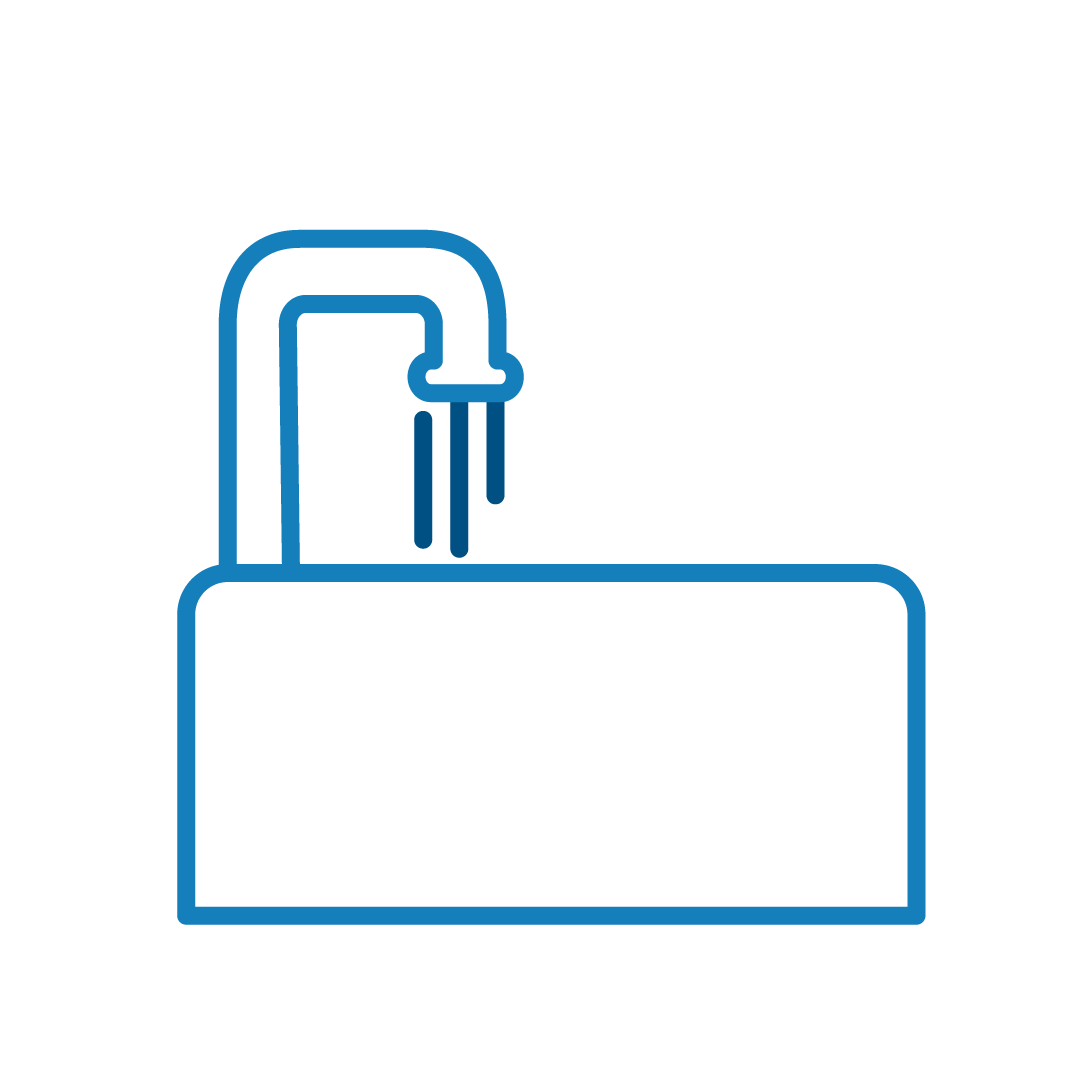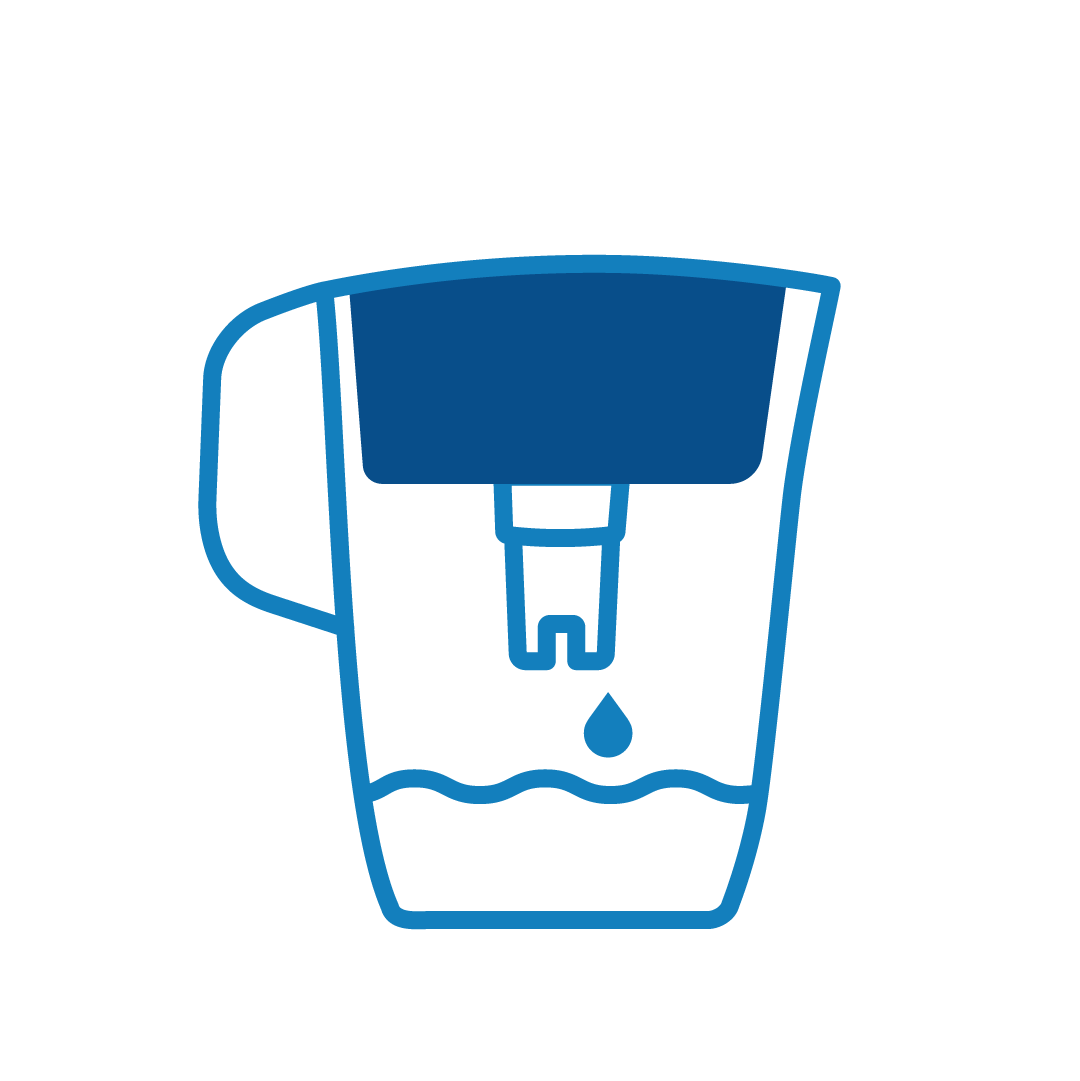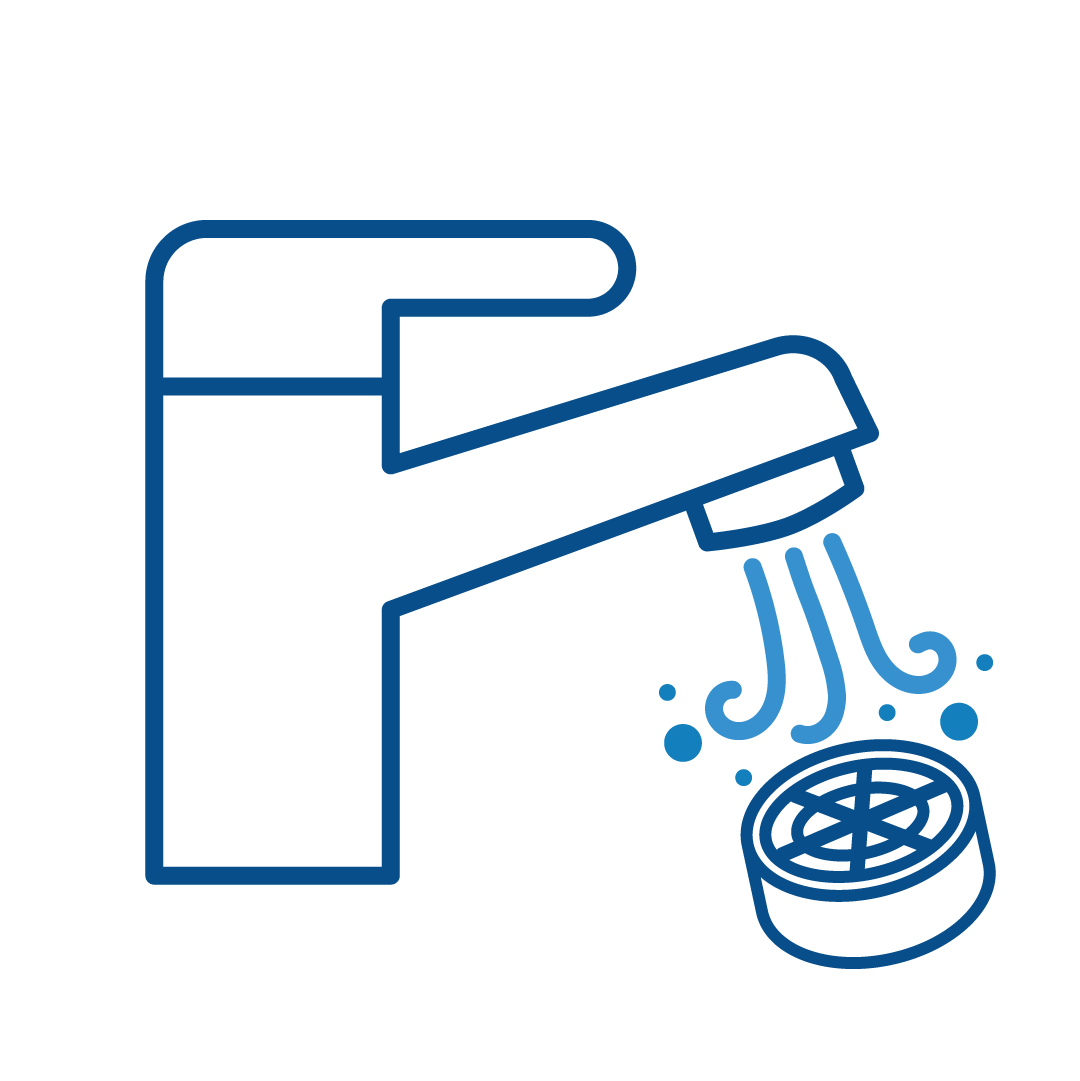JXN Water
Lead Awareness and Public Education Program
Lead Service Line Inventory
What Will JXN Water Do?
Sources of Lead
Reduce Your Risk
Frequently Asked Questions
School and Childcare Facilities
Lead Service Line Inventory
What Will JXN Water Do?
Sources of Lead
Reduce Your Risk
Frequently Asked Questions
School and Childcare Facilities
Overview
At JXN Water, protecting public health is at the core of everything we do. Drinking water leaving our treatment plants does not contain lead. However, in certain situations, water can cause lead to leach from water service lines, lead-based solder on copper pipes (used until 1988), and brass faucets/fittings that contain lead.
As part of our ongoing commitment to reducing potential lead exposure in drinking water, JXN Water is actively working on the following:
Continuous Monitoring: We regularly collect water samples throughout our entire service area to monitor and assess the effectiveness of our lead corrosion control treatment.
Education and Awareness: We are committed to providing increased education about lead in drinking water, encouraging customers to take action on lead service lines in the community to reduce the potential risk of lead exposure.
Infrastructure Upgrades: We are continuing our water main rehabilitation program, replacing the oldest pipes in the system, which includes lead service lines if present.
Service Line Identification: We are actively working to identify all drinking water service line materials throughout the water system and have been proactively preparing for compliance with the United States Environmental Protection Agency’s (EPA) Lead and Copper Rule Revisions.
Lead Service Line Inventory
In accordance with the EPA’s Lead and Copper Rule Revisions, JXN Water has developed an inventory of all water service line materials within our service area. A water service line is a pipe connecting your building to the public water system water main. Ownership of the water service line is split as shown in the graphic on the right. JXN Water owns the portion of the service line from the water main to the water meter, and the property owner owns the portion of the service line from the water meter to the building.

The inventory includes information on both the utility side and private side material of your water service line. The inventory indicates if the material is lead, non-lead, galvanized requiring replacement (GRR), or lead status unknown (unknown).
To learn more about the material of the service line that provides water to your home or building, click on the webmap link below.
To find out what material your service line is:
Simply type in your address to see the status of your service line material.
Then refer to “What Will JXN Water Do for Lead, GRR, and Unknown Service Line Materials” below.
The information in the inventory is based on the best available data, and we are continuously updating it as we gather more information.
If you feel the water service line material does not accurately reflect your property, or if you need assistance identifying the service line material in your home or building, please call JXN Water at 601-500-5200.
What Will JXN Water Do for Lead, GRR, and Unknown Service Line Materials?
We are actively working to identify all unknown service line materials. For more information including assistance if you’d like to identify your own service line material, please contact JXN Water at 601-500-5200.
The EPA has developed an online step-by-step guide to help people identify lead service lines in their homes called Protect Your Tap: A Quick Check for Lead. It is available at: www.epa.gov/ground-water-and-drinking-water/protect-your-tap-quick-check-lead
Customers with known lead service lines will be contacted within 6 months of lead being identified to schedule replacement.
JXN Water is taking steps to identify, plan for, and replace GRR service lines in our service area.
JXN Water will continue to update our inventory and will be developing service line replacement plans. Refer to the website for replacement activity updates.
For more information about lead, including how you can reduce your risk of lead exposure, refer to the information below.
Potential Sources of Lead
Lead can enter drinking water from lead service lines and plumbing materials that contain lead, as shown in the diagram below. Additionally, if water stands in plumbing systems containing lead for several hours or more, lead may be more likely to be present in your drinking water. For additional information on lead in drinking water provided by the EPA, click here.
Lead in drinking water is one potential source of lead. Other sources of lead exposure are highlighted below. For more information from the EPA about sources of lead, click here
Paint
Lead-based paint on surfaces that children can chew or on “wear-and-tear” areas.
Exterior Sources
Contamination can occur from exterior sources such as flaking or peeling lead-based paint on houses or buildings, as well as from gasoline or plumbing systems.
Dust
From indoor surfaces with lead-based paint, contaminated soil, home repairs, or job site clothing.
Furniture
Older furniture, especially if lead-based paint was used.
Painted Toys
Biting or swallowing toys with lead-based paint. Toy jewelry, crayons, chalk.
Playgrounds
Older equipment with lead-based paint, artificial turf or shredded rubber.
Food or Liquid Containers
Lead may be present in food from the environment where foods are grown, raised, or processed, or in foodware. Visit the FDA’s webpage on Lead in Food and Foodwares for more information.
Food or Liquid Containers
Lead may be present in food from the environment where foods are grown, raised, or processed, or in foodware. Visit the FDA’s webpage on Lead in Food and Foodwares for more information.
Understanding the Risk
We take this very seriously. Here’s important information on the health effects of lead in drinking water from the U.S. Environmental Protection Agency:

“Exposure to lead in drinking water can cause serious health effects in all age groups. Infants and children can have decreases in IQ and attention span. Lead exposure can lead to new learning behavior problems or exacerbate existing learning and behavior problems. The children of women who are exposed to lead before or during pregnancy can have increased risk of these adverse health effects. Adults can have increased risks of heart disease, high blood pressure, kidney or nervous system problems.”
Reducing Lead Exposure
Below are recommended actions that you may take, separately or in combination, if you are concerned about lead in your drinking water. The list also includes where you may find more information and is not intended to be a complete list. The list does not imply that all actions equally reduce lead exposure from drinking water, or that any action, separately or in combination, will remove lead completely from drinking water. For additional information, visit the EPA’s website on lead in drinking water.

Run the cold water to flush out lead.
The more time water has been sitting in your home’s pipes, the more lead it may contain. Before drinking, flush your home’s pipes by running the tap, taking a shower, doing laundry, or doing a load of dishes. The amount of time to run the water will depend on whether your home has a lead service line or not, as well as the length and diameter of the service line and the amount of plumbing in your home. It is recommended to flush the cold-water faucet from 30 seconds to 2 minutes, or until it becomes cold or reaches a steady temperature, before using for drinking or cooking.

Use cold water for drinking, cooking, and preparing baby formula.
Use only cold water for drinking, cooking and making baby formula. Hot water may cause increases in lead concentrations at the tap and therefore should not be used to prepare food or baby formula. Boiling water does not reduce or remove lead from drinking water.

Use a filter certified to remove lead.
Using a filter can reduce lead in drinking water. If you use a filter, it must be certified to remove lead from drinking water. Read any directions provided with the filter to learn how to properly install, maintain, and use your cartridge and when to replace it. Using the cartridge after it has expired can make it less effective at removing lead. Do not run hot water through the filter.
EPA Resources:
Explore home water filtration resources at Home Drinking Water Filtration Fact Sheet. Find certified drinking water filters to reduce lead at Consumer Tool for Identifying Drinking Water Filters.

Install lead-free faucets and fixtures.
Look for lead certification marks indicating the new product is lead free, and then replace old faucets and fixtures. Refer to EPA’s brochure on how to identify lead free certification marks
for pipes, fittings, fixtures, solder, and flux used for drinking water for more information.

Clean your faucet aerators.
Regularly clean your faucet’s screen (also referred to as an aerator). Sediment, debris, and metals, including lead particles, can collect in the aerator. If lead particles are caught in the aerator, lead can get into your water.

Test your water for lead.
The only way to determine the level of lead in drinking water at your home/building is to have the water tested. You can contact the Mississippi Public Health Laboratory, at 601-576-7582 during business hours, to have your water tested. You can also find a certified lab in your area by calling the Safe Drinking Water Hotline at 800-426-4791 or visiting www.epa.gov/safewater/labs.

Test your child’s blood lead level.
Contact your local health department or healthcare provider to find out how you can get your child tested for lead if you are concerned about exposure.

Look for other sources.
Reduce your risk by finding all the other potential sources of lead in your environment (such as lead paint, recalled food products, old furniture, old jewelry, and old toys).
Frequently Asked Questions
What is JXN Water’s Lead Awareness and Public Education Program?
JXN Water is committed to reducing the risk of lead exposure from drinking water. We are doing all we can to protect our customers and give you information along with steps you can take to reduce your exposure. This program includes developing an inventory of service line materials, proactively replacing any lead service lines that are found and providing certified water filters to reduce lead, taking corrosion control steps, and continuing outreach and education to our customers.
What is lead and why is it a health concern?
Lead is a naturally occurring element found in small amounts in the earth’s crust. It is also a toxic, soft metal that can be found in paint, dust, air, soil, food, and water, and can be harmful to human health. There is no safe level of exposure to lead in drinking water. Lead is persistent, and it can bioaccumulate in the body over time. Exposure to lead in drinking water can cause serious health effects in all age groups. Infants and children can have decreases in IQ and attention span. Lead exposure can lead to new learning and behavior problems or exacerbate existing learning and behavior problems. The children of women who are exposed to lead before or during pregnancy can have increased risk of these adverse health effects. Adults can have increased risks of heart disease, high blood pressure, kidney, or nervous system problems.
How does lead get into drinking water?
Lead can enter drinking water when plumbing materials that contain lead corrode. The most common sources of lead in drinking water are lead and galvanized pipes, faucets, and fixtures. In homes served by lead services lines, these pipes are typically the most significant source of lead in the water. Lead can attach to the inner surface of galvanized service lines and be released into drinking water over time. Service lines made of galvanized iron or steel that are (or were previously) downstream of lead service lines are classified as galvanized requiring replacement (GRR). Identifying and ultimately removing lead and GRR service lines is an important way to protect public health.
What is a water service line?
A water service line is an underground pipe that connects your house or building to the water main in the street. Service lines may be made of copper or other materials such as galvanized iron or steel, plastic, brass, or lead. If any portion of the pipe is made of lead, it is called a lead service line (LSL).
Is water the only source of lead in houses and buildings?
No. While water may be a source of exposure to lead in houses and buildings, lead-based paint, dust, contaminated soil, lead-glazed pottery, and some toys and jewelry may also contain lead. Lead-based paint and lead-containing toys pose a significant risk especially for young children. For more information on protecting your family from lead in your home, please visit: https://www.epa.gov/lead/protect-your-family-sources-lead.
How do I know if my home has a lead service line, GRR service line, or lead plumbing?
- You can find out if the pipe that connects your home to the water main (called a service line) is made from lead, galvanized or other materials by accessing our look up map at jxnwater.com/lead under the Lead Service Line Inventory section.
- A licensed plumber may be able to assess your faucets, fixtures, and service line for lead.
- EPA has developed an online step-by-step guide, Protect Your Tap, to help people identify lead pipes in their homes. The online tool is located at www.epa.gov/pyt.
Can I shower in lead-contaminated water?
Yes. Bathing and showering should be safe for you and your children. Human skin does not absorb lead in water.
Is it safe to wash dishes and do laundry?
Yes, but dry them after. Wash dishes, bottles, and toys with soapy water. Dry before use. Lead in water will not be absorbed by porcelain, metal, or glass. Clothes washed in plain tap water will not contain enough lead to cause harm.
Will JXN Water replace my lead service line?
JXN Water is voluntarily replacing lead service lines if encountered. We are also taking steps to identify, plan for, and replace GRR service lines in our system, and will continue to keep the community informed.
How does JXN Water test for lead in drinking water?
JXN Water regularly tests the water at a selected number of high-risk homes/buildings located throughout the distribution system, as required by the EPA’s Lead and Copper Rule. If samples show lead at or above 15 micrograms per liter, we notify the customer and provide instructions on what to do to limit lead exposure as required by MSDH. We also proactively provide customers with a water filter certified to remove lead.
If you have further questions about JXN Water’s lead testing results and other information about your drinking water, you can read our Annual Water Quality Report posted on our website at https://jxnwater.com/our-water/.
Can I test my drinking water for lead?
You can contact a certified laboratory to have your water tested and to learn more about the lead levels in your drinking water. Your water can be tested by the Mississippi Public Health Laboratory. You can call them at 601-576-7582 during business hours to get more information about the testing process. You can also find a certified lab in your area by calling the Safe Drinking Water Hotline at 800-426-4791 or visiting www.epa.gov/safewater/labs.
Where can I go to ask questions and get more information?
For more information about JXN Water’s Lead Awareness and Public Education Program, visit www.jxnwater.com/lead. If you have any questions, please contact us at 601-500-5200.
For more information on lead in drinking water, visit:

